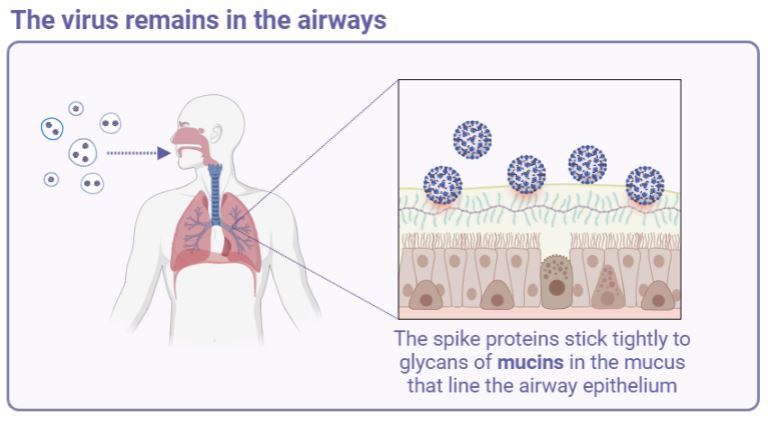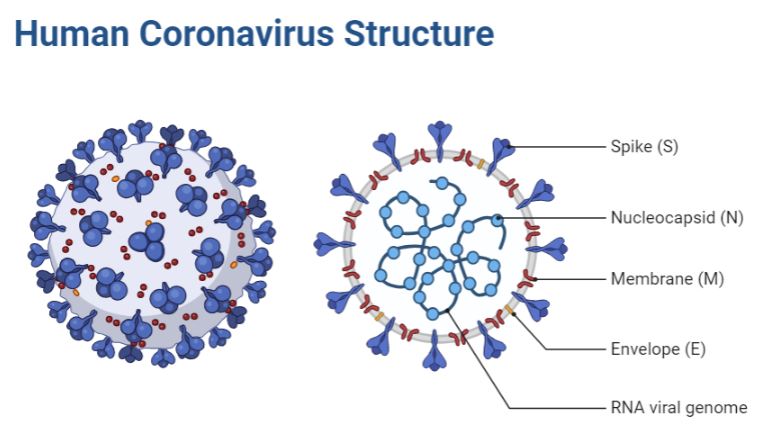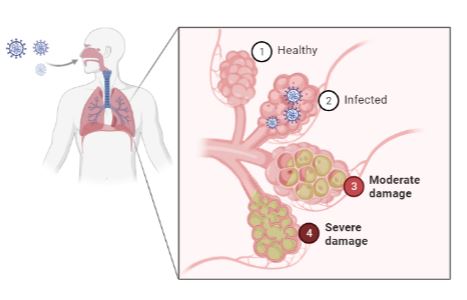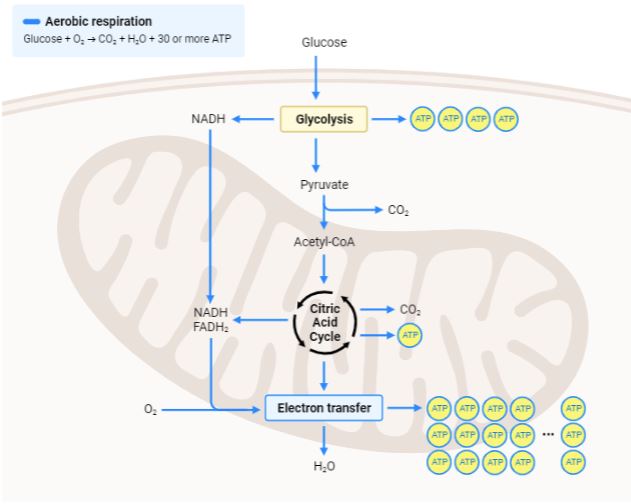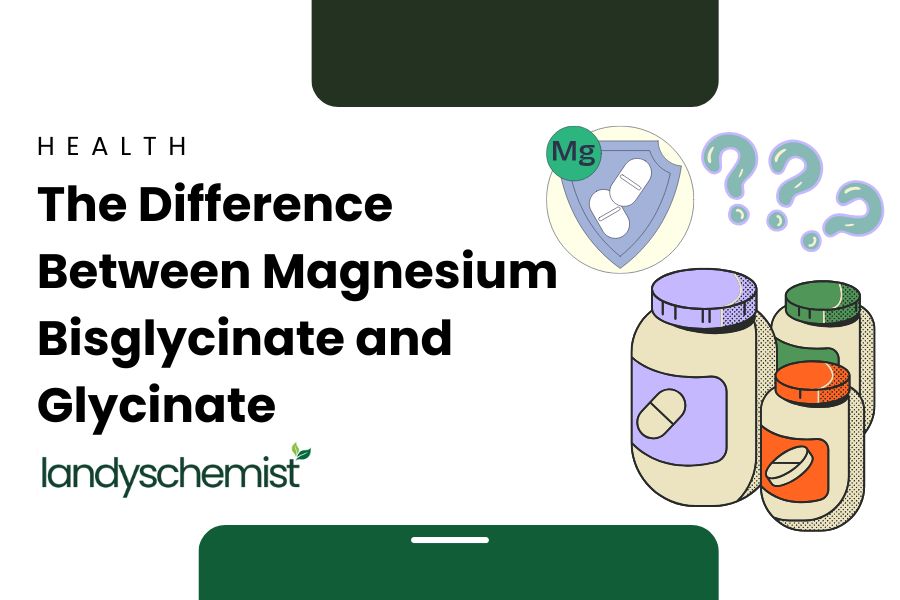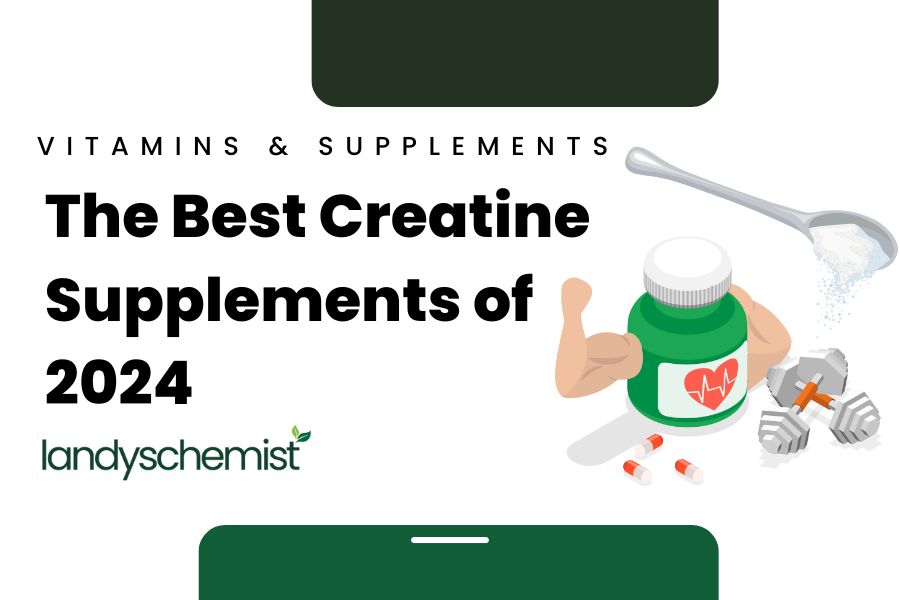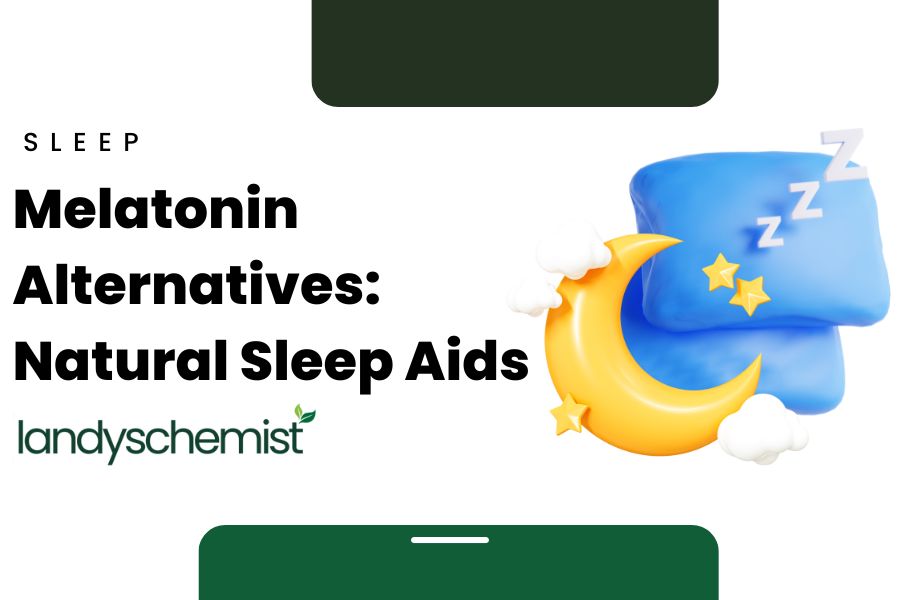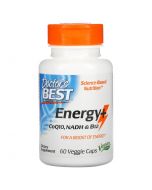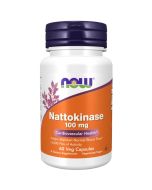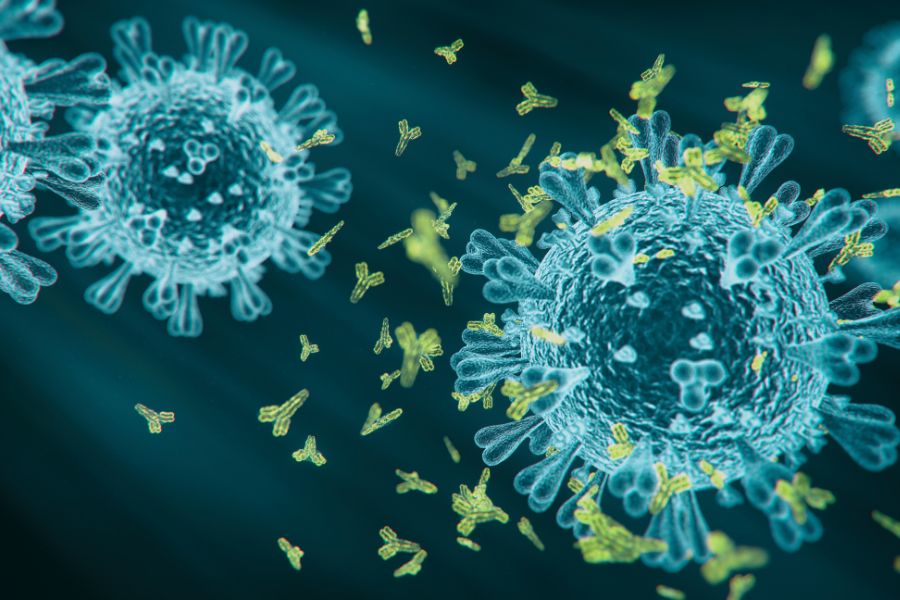
How NADH Can Treat Long Covid
Long Covid, the persisting effects of COVID-19 experienced by individuals for an extended period, continues to challenge both patients and healthcare professionals alike. As researchers delve deeper into understanding this complex condition, promising avenues for potential treatments are emerging. One such avenue revolves around the crucial role of Nicotinamide Adenine Dinucleotide (NADH) in cellular energy production and mitochondrial function.
In this blog, we explore the intriguing potential of NADH as a therapeutic option for Long Covid, shedding light on its mechanisms, benefits, and implications for symptom relief and improved recovery.
What is Long Covid
Most individuals who have contracted acute COVID-19 typically experience a noticeable improvement in their condition within a few weeks from the onset of symptoms.
However, there is a phenomenon known as Long Covid, also known as post-acute sequelae of SARS-CoV-2 infection (PASC) or chronic covid syndrome. This refers to a situation where individuals continue to experience the effects of COVID-19 for an extended period of several weeks or even months beyond their initial illness. People with Long Covid may endure the lingering effects of the virus or develop new symptoms that persist for a significantly longer period of time.
The WHO has classified Long Covid as Coronavirus symptoms that persist or return three months after a person contracts the SARS Cov-2 infection that causes COVID-19.
Long covid can significantly impair a person’s quality of life, making it difficult to carry out daily activities and return to their normal routines. It can affect people of all ages, including those who had mild or asymptomatic initial infections.
What are the symptoms of Long Covid
Symptoms of long covid can vary widely and affect different organ systems within the body. Common symptoms include:
- Chronic fatigue
- Shortness of breath
- Brain fog (problems with memory and concentration)
- Muscle and joint pain
- Chest pain and tightness
- Heart palpitations
- Sleep difficulties (insomnia)
- Respiratory problems
- Gastrointestinal issues
- Mood changes
- Neurological symptoms
- Tinnitus and earaches
What causes Long Covid?
The full understanding of Long Covid remains incomplete, given its complex nature. While it is clear that individuals with certain risk factors, such as smoking, high blood pressure, and obesity, are more susceptible to experiencing severe cases of COVID-19, the connection between these factors and the long-term effect of the virus is still uncertain.
Below are some possible causes to the development of Long Covid symptoms:
Persistent Viral Activity
Prolonged symptoms in some cases may arise from the continued replication and persistence of the SARS-CoV-2 virus within the body. Several studies have provided evidence that certain patients infected with SARS-CoV-2 have been unable to fully eliminate the virus over an extended duration, as confirmed by the detection of RNA presence. This suggests that the virus can persist in these individuals, potentially contributing to the ongoing symptoms experienced.
Mutations and Immunosuppression
Research has indicated that immunosuppression, or the suppression of the immune system, could contribute to the persistence of COVID-19 symptoms. In a specific study, viral infectivity was examined, and it was confirmed that the infectious SARS-CoV-2 virus was still present on days 75 and 143 of the COVID-19 infection. Additionally, the analysis revealed that the virus underwent mutations within the patient, resulting in the emergence of new amino acids in its spike protein and receptor binding domain. This suggests that the virus may be capable of evading the immune response and developing resistance against neutralizing antibodies targeted at SARS-CoV-2.
Inflammation and tissue damage
COVID-19 possesses the capacity to trigger inflammation and cause damage upon organs and tissues like the lungs, hearts, brain and even in the blood vessels. The initial damage inflicted by the virus can play a role in the emergence of persistent symptoms, either due to incomplete recovery or the presence of lung scarring. Notably, research has indicated that approximately 60% of individuals who have recuperated from COVID-19 exhibited signs of continued heart inflammation, which could lead to manifestations such as shortness of breath, palpitations, and a rapid heartbeat. Another study revealed that over 30% of patients who were discharged from the hospital after recovering from COVID-19 experienced lung fibrotic abnormalities. This suggests that a significant portion of individuals may develop scarring and tissue damage in their lungs as a consequence of the infection.
Dysregulation of the immune system
An additional potential cause is the incomplete clearance of the virus from the patient's blood, tissues, or nerves, caused by the dysregulation of the host immune response. Consequently, the virus can invade new locations within the body, triggering the onset of new symptoms. Furthermore, this dysregulation can disrupt the balance of microbial and viral ecosystems. As a result, pathogens like SARS-CoV-2 may opportunistically enhance their virulence, accelerating their spread and contributing to the manifestation of symptoms.
What can help Long Covid Symptoms?
There has been a growing number of studies to suggest that the supplementation of NADH can help reduce long covid symptoms such as chronic fatigue, and inflammation. Additionally, research suggests that depletion of NAD+ may contribute to the symptoms we see with long covid.
What is NADH?
NADH stands for nicotinamide adenine dinucleotide which is a coenzyme involved in various cellular processes within the body such as the metabolism of food into energy, also known as cellular respiration. It is the reduced form of NAD+ (nicotinamide adenine dinucleotide) meaning that it contains a hydrogen and serves as an electron carrier in metabolic reactions.
Natural NAD production declines as we age, and these production pathways become less efficient.
How does NADH work?
NAD, a vital molecule in the body, is synthesized through different pathways. It can be produced from l-tryptophan, utilizing amino acids and vitamins in a process called De Novo Synthesis. Alternatively, it can be derived from vitamin B3 (nicotinamide or nicotinic acid) through the Preiss handler pathway.
NAD plays a critical role in cellular respiration, particularly in the electron transport chain (ETC). In the ETC, NAD transfers electrons, facilitating the generation of ATP (adenosine triphosphate), the energy currency of the cell. NAD is also involved in vital metabolic pathways, including glycolysis and the citric acid cycle, both of which are crucial for ATP and NADH production.
By participating in these metabolic processes, NAD ensures the availability of energy for various cellular functions and supports overall cellular metabolism. It acts as a key mediator in energy production, enabling the efficient utilization of nutrients and maintaining cellular health.
Below are some key functions of NADH within the body:
Electron Carrier
NADH serves as an electron carrier during cellular respiration. In metabolic pathways such as glycolysis, the citric acid cycle, and oxidative phosphorylation, NADH donates electrons to the electron transport chain located in the inner mitochondrial membrane. If the electron transport chain is impaired from long covid due to mitochondrial dysfunction, symptoms such as chronic fatigue and reduced energy levels can occur.
Energy production
During electron transport chain reactions, the transfer of electrons from NADH to molecular oxygen results in the production of ATP through oxidative phosphorylation. This process is vital for generating the energy required for cellular activities.
Redox Reactions
NADH participates in redox reactions throughout the body. It acts as a reducing agent, donating electrons to other molecules and becoming oxidized to NAD+ (losing an electron). The conversion between NADH and NAD+ is reversible and allows for the continuous cycling of electrons in various metabolic pathways. This is important for energy production and supporting antioxidant defence mechanisms.
Antioxidant Activity
In addition to its role in energy production, NADH also exhibits antioxidant properties by serving as a cofactor for antioxidant enzymes like glutathione reductase. It helps regenerate these enzymes and helps neutralise reactive oxygen species (ROS) which are harmful to cells and can cause oxidative stress.
Metabolic Processes
NADH is involved in several metabolic processes beyond energy production. It participates in biosynthetic pathways, such as the synthesis of fatty acids and cholesterol, as well as the production of neurotransmitters like dopamine and serotonin.
The benefits of NADH for Long Covid
Energy Production
In Long Covid, individuals often endure persistent fatigue and a notable decline in energy levels that can significantly impact their daily functioning. NADH, or nicotinamide adenine dinucleotide, plays a vital role in cellular energy production through its involvement in a process called oxidative phosphorylation.
During oxidative phosphorylation, NADH donates electrons to the electron transport chain, a series of protein complexes embedded in the mitochondrial membrane. This electron transfer leads to the synthesis of ATP which is essential for powering various cellular processes, including muscle contraction, neuronal activity, and immune function.
This enhanced ATP synthesis from NADH can potentially improve energy levels and alleviate the persistent fatigue experienced by Long Covid patients. Restoring optimal energy production through NADH support may help individuals regain their physical stamina and alleviate the debilitating fatigue that hampers their daily activities.
Mitochondrial Function
Mitochondrial dysfunction is a common occurrence in Long Covid, leading to abnormalities in the structure and function of mitochondria. This dysfunction significantly impacts cellular metabolism and ATP generation, resulting in decreased energy levels and compromised cellular function.
NADH plays a vital role in maintaining mitochondrial health, acting as an electron carrier in the electron transport chain. By enhancing mitochondrial function, NADH can effectively restore energy metabolism in individuals with Long Covid. Improved mitochondrial function enhances the cellular capacity to produce ATP, replenishing energy stores and overall cellular function. Consequently, this can alleviate fatigue, enhance physical endurance, and improve cognitive function in those experiencing the prolonged effects of Covid-19.
Furthermore, NADH has demonstrated its ability to support mitochondrial biogenesis, the generation of new mitochondria within cells. By facilitating the formation of fresh and healthy mitochondria, NADH aids in the recovery and repair of damaged mitochondrial structures observed in Long Covid.
Antioxidant Effects
Long Covid is associated with heightened oxidative stress, which arises from an imbalance between reactive oxygen species (ROS) production and the body's antioxidant defence mechanisms. NADH plays a crucial role in combating oxidative stress as an antioxidant by donating electrons to enzymes such as glutathione peroxidase to neutralize ROS, thereby safeguarding cells against oxidative damage. By mitigating oxidative stress, NADH holds the potential to alleviate symptoms linked to inflammation and tissue damage observed in Long Covid. This antioxidant activity of NADH contributes to maintaining cellular integrity and supporting the recovery process in individuals experiencing the prolonged effects of Covid-19.
Immune Support
NADH has been shown to have immunomodulatory effects, regulating immune cell function and cytokine production. Long Covid is characterized by immune dysregulation, and NADH's immunomodulatory properties may help restore proper immune function, reduce excessive inflammation, and support the recovery process.
Product Recommendations
PharmaNord NADH Tablets offer a dynamic blend of NADH and vitamin B3, delivering a powerful combination that supports energy production, metabolism, and the reduction of tiredness and fatigue. Created with slow-release technology, these tablets optimize the absorption and utilization of their key ingredients by the body.
By Saarah Mengrani, MSc Biotechnology

